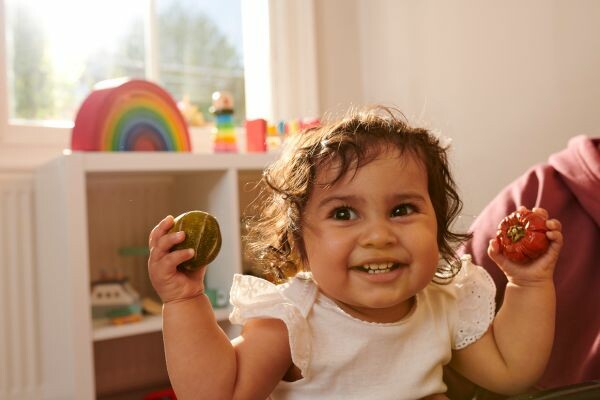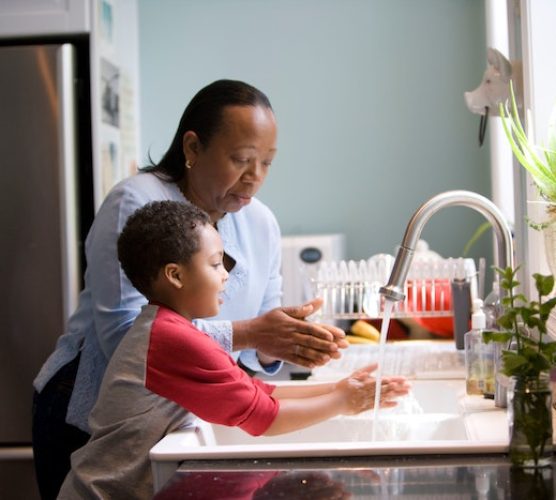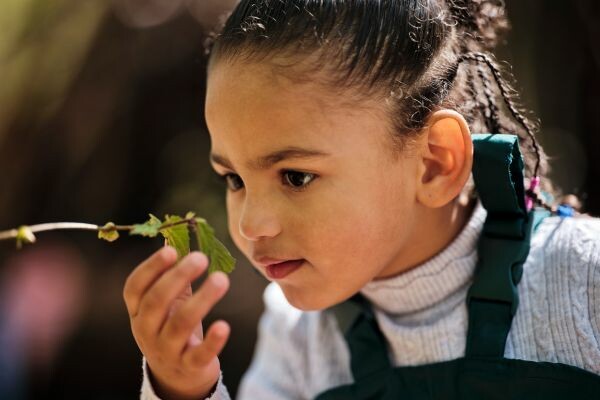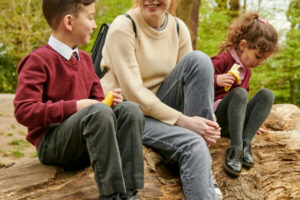Being a parent is the hardest job in the world. With loads of different parenting styles, it’s easy to compare how you parent to others. But there’s not one ‘best’ method to choose. That said, Montessori parenting and education has quickly become a popular method in raising the next generation.
But what is Montessori? Can it be done in the home? To help, we’ve laid out some core principles of the Montessori lifestyle and some easy ways to bring it into your home.
Okay…so what is Montessori?
The Montessori method was developed in the 20th century by Italian doctor and educator Maria Montessori and is prominent in early childhood and primary school education.
It takes a holistic, child-led approach to learning. Children are able to develop their social, emotional, physical, and cognitive abilities by exploring the world and using their imagination. Montessori aims to set the foundation for lifelong learning from an early age.
Core principles of Montessori
Some core principles of the Montessori method are:
- Respect for the child
- Absorbent mind
- Sensitive periods
- The prepared environment
Respect for the child
A deep respect for children is ingrained in Montessori philosophy. It involves respecting a child’s freedom to choose, to work at their own pace, and to correct their own mistakes. Montessori believes in embracing the uniqueness of every child.
In practice: Don’t interrupt play time
Play time is how our children learn. When your child is playing it can be tempting to interrupt with a prompting question or a quick cuddle. But it isn’t all fun and games – play time allows them to develop cognitive, social, and emotional skills. They get to foster their creativity, imagination and problem solving skills.
With this in mind, giving them the time and space to play is important to their development. Respecting play time and giving your little one some space to learn is a quick and easy way to put this principle into practice.
Absorbent mind
According to Maria Montessori’s research, the first 6 years of a child’s life are most crucial to their development. Known as the phase of the ‘absorbent mind’, it’s used to describe children’s sponge-like ability to absorb information around them.
In practice: Involve your child in day-to-day activities
You do so many mindless activities every day that you don’t think twice about. One easy way to help your little one learn is to have them get involved in these tasks. By simply living, we have the opportunity to learn. Invite your child to help open a door, or maybe ask them to help transfer food from a bag to your puppy’s food bowl. This will allow them to be more independent and learn from the world around them. Other examples of practical life activities include:
- Carrying objects
- Washing hands
- Opening and closing
- Pouring and spooning
- Brushing teeth
- Sweeping
- Setting the table
- Polishing items
Sensitive periods
Montessori argues there are specific stages in every child’s development where they are more capable of learning certain skills. These ‘sensitive periods’ are essentially an opportunity for learning. They are unique to each child and don’t have a set timetable. Sensitive periods can include things like intense focus, extended concentration or commitment to completing a task.
In practice: Observation
You already do this on a regular basis, but take a moment to slow down and really observe your little one. What are they interested in this week? What do they gravitate towards? How are they holding or moving objects?
Being intentional about observation can help you make some educated guesses about where they’re at and what they need to work on. It will allow you to come up with activities and ideas which cater to their needs.
The prepared environment
A prepared environment is a safe learning space where everything in it has a place and a purpose. It has a clear order which helps little ones work their brain’s muscles. These spaces also provide children with freedom to choose what they want to do and focus on.
In practice: Create a ‘yes’ space
A ‘yes’ space is a room where children are 100% safe. It’s a room where a child could be left alone and may be grumpy and in desperate need of a nappy change, but will not be physically harmed. Creating a ‘yes’ space is a bit more intensive than the other ideas listed above. That said, it provides children with a secure location to explore without fear of being reprimanded or told ‘no’. To make a ‘yes’ space, keep things like this in mind:
- Make sure all outlets are covered
- Use a baby gate to block off the room to help the baby feel secure
- Cardboard-only books
- Use child-sized furniture and make sure furniture is secure
Not sure you’ve achieved it? Ask another adult to have a look and make sure you haven’t missed any safety hazards.
What is Montessori? It’s a lifestyle.

This list only scratches the surface of the Montessori principles. Montessori is not so much a discipline as it is a lifestyle and a mindset. It believes children should be in control of their own learning and works to give children opportunities to develop and learn through living.
But remember…
There’s not one ‘right way’ to parent
Not all of these principles may fall in line with your beliefs, and that’s okay – Montessori is merely one option. It might not be for everyone.
Maria Montessori’s extensive research into the development of young children makes it one of the more enticing options. In the past, Montessori has been seen as inaccessible. We hope we’ve provided a few ways to incorporate Montessori principles in your home that are more feasible.
When in doubt, follow your little one’s lead and use your creativity!
Why we’re inspired by Maria Montessori
There are many things about the Montessori way of parenting that inspired our Home Nursery service – click to read more about the Koru Kids ethos.




